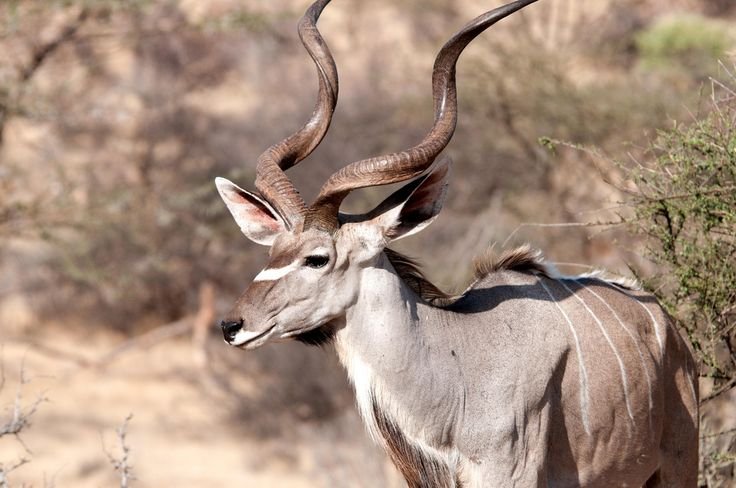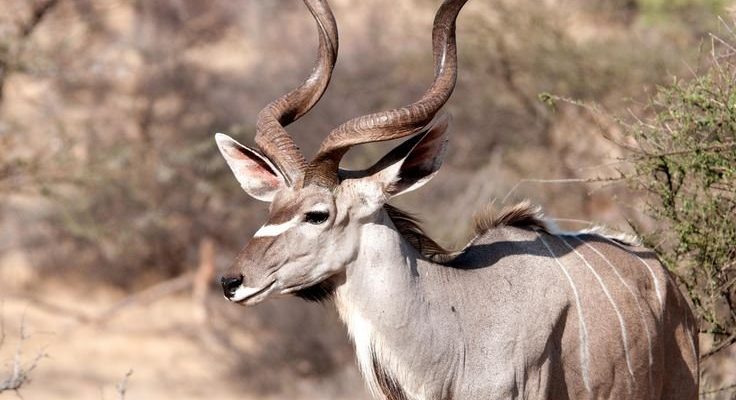
Think of the greater kudu as a living time capsule. This animal carries the stories of its ancestors, shaped by millions of years of natural selection and environmental changes. If you sip your coffee and imagine the world as it was eons ago, you’ll start to see the evolutionary path that led to the kudu we know today. So, grab your favorite mug, and let’s embark on this journey through time together.
Where It All Began: The Ancestral Roots
Understanding the evolutionary history of the greater kudu begins with exploring its ancestors. The kudu belongs to the Bovidae family, which includes a variety of hoofed mammals like cows, goats, and antelopes. These animals share common traits, such as a ruminant digestive system, allowing them to efficiently break down tough plant material.
The story takes us back roughly 20 million years when early bovids began to emerge. Fossil evidence shows that the ancestors of the greater kudu distinguished themselves in Africa, adapting to the diverse environments of the continent. These early bovids were quite different from the kudu we see today. They were generally smaller and didn’t have the long spiraled horns or the distinctive physical features that characterize modern kudu.
As the millions of years rolled on, the greater kudu began to emerge, adapting to its environment in really interesting ways. This isn’t just about survival of the fittest—it’s about survival of the most adaptable. The kudu’s long legs and slender build helped it navigate the bush and escape predators, while its unique coloration allowed it to blend into the background, making it less visible to threats.
The Rise of the Greater Kudu: Physical Adaptations
As we explore the evolutionary journey of the greater kudu, it’s essential to acknowledge its distinctive physical traits. These adaptations were key for its survival in the wild. For starters, the males have impressive horns that can twist up to 1.5 meters in length. This isn’t just for show; the horns play an essential role during mating season when males engage in battles for dominance.
Additionally, the kudu’s large ears are more than just aesthetically pleasing. They serve as excellent tools for hearing. In the wild, being able to detect the faintest sounds can mean the difference between life and death. Imagine the kudu, silently listening for rustling leaves or distant footsteps in the brush.
Another fascinating adaptation is the greater kudu’s camouflage. Their striped coat acts as a natural disguise, allowing them to blend into the dappled sunlight filtering through the trees. This helps them avoid predators like lions and hyenas. When you look at a group of kudu standing still, it’s like watching a living optical illusion—they just seem to disappear into the landscape.
Behavioral Adaptations: Social Structures and Survival
Behavioral aspects are just as vital in understanding the evolution of the greater kudu. These animals are generally shy and prefer to be solitary or in small groups. This behavior helps minimize their chances of being detected by predators. You might be wondering how a creature so large can be so elusive. Well, the answer lies in their instincts and social structure.
Greater kudu often form small groups—typically females and their young. Males tend to be more solitary, especially as they grow older. This social structure allows for a balance; females can raise their young while males can focus on finding food and asserting their dominance. During mating season, however, males will join groups of females, showcasing their impressive antlers in an effort to impress potential mates.
Interestingly, these animals have developed a unique form of communication. They utilize various sounds, from deep grunts to soft bleats, to signal to each other. This intricate communication system plays a crucial role in maintaining group cohesion and alerting others to potential dangers.
The Role of Habitat in Evolutionary Change
You might be surprised to learn that the greater kudu’s habitat has significantly influenced its evolutionary path. Originally, these animals roamed a much wider range, but changing climates and human encroachment have altered their habitats over time. They thrive in wooded savannas and hilly terrains, which provide both food and cover from predators.
Their diet consists largely of leaves, shoots, and fruits—foods that are typically abundant in their preferred habitats. As environmental conditions change, the kudu has had to adapt its foraging behavior. It’s a bit like an ongoing game of musical chairs where the food changes location, and the kudu has to keep moving to stay fed.
Moreover, the increase in human activity has pushed greater kudu into more fragmented environments. This isn’t just a hiccup; it can lead to genetic isolation and affect their ability to thrive. These challenges highlight the importance of conservation efforts to protect not just the kudu but their habitats as well.
Conservation Status: Challenges and Efforts
Speaking of conservation, the greater kudu faces numerous challenges in the modern world. While they are currently listed as a species of Least Concern, their populations are not invulnerable. Habitat loss, poaching, and competition with livestock are significant threats. Imagine a beautiful creature like the greater kudu being pushed to the brink simply because of human expansion.
Conservation efforts are crucial to ensure that these animals continue to roam the African landscapes. Various organizations are working tirelessly to protect the greater kudu’s habitats and educate local communities about the importance of these animals. By fostering a harmonious coexistence between wildlife and humans, we can help ensure that future generations can also experience the beauty of this magnificent species.
Wildlife reserves and national parks play a vital role in safeguarding greater kudu populations. By creating protected areas, we allow them to thrive without the pressures of hunting and habitat destruction. It’s all about balance—ensuring that both the animals and people can thrive side by side.
The Future of the Greater Kudu
So, what does the future hold for the greater kudu? With ongoing conservation efforts and increased awareness, there’s hope that their populations can stabilize. New approaches to land management that take wildlife into account are essential. This includes creating wildlife corridors, which allow animals to move freely between habitats, helping maintain genetic diversity.
The greater kudu symbolizes resilience and adaptability in the face of change. As we continue to learn about their evolutionary history, we can gain insights into the delicate balance of ecosystems and how every species contributes to the overall health of the environment. The kudu’s story is a powerful reminder of the interconnectedness of life on Earth.
Ultimately, the greater kudu’s evolutionary journey teaches us about the importance of respecting and protecting our natural world. Just like this magnificent creature, we all have our roles to play in the vast tapestry of life, and it’s our responsibility to ensure that these beautiful animals continue to thrive in their habitats for years to come.
In conclusion, the evolutionary history of the greater kudu is not just about the animal itself but about the delicate web of relationships and adaptations that connect all living things. By understanding their past, we can better appreciate their present and work towards a sustainable future.

